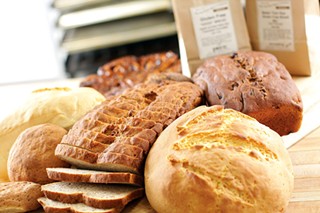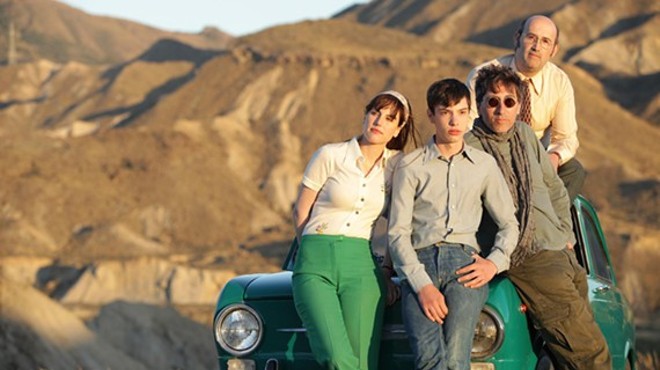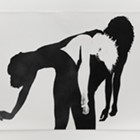Nearly 2,000 years ago, people noticed a cluster of symptoms that included periodic bouts with cramps, chronic diarrhea, a particular skin rash and an inability to absorb nutrients. Science didn’t peg the problem to gluten until the 1960s.
It took another 40 years for broad public awareness of celiac disease, or gluten-intolerance, to arrive. The people we have to thank, oddly, are celebrities and their personal chefs — Gwyneth Paltrow, Elizabeth Hasselbeck and the baker who made Chelsea Clinton’s wedding cake.
What started as a celebrity ripple in 2009 (with Hasselbeck’s cookbook and Paltrow’s “cleanse”) became a trendy tidal wave by August of 2010 (with Clinton’s wedding and a fl ood of morning talk show segments).
When the wave washed ashore, though, it carried with it a lot of misinformation, hasty statements and wrong assumptions. Diagnosis of the disorder can seem a bit vague — some are pronounced gluten-intolerant after dramatic health improvements following a trial period of a gluten-free diet. While blood tests and intestinal biopsies offer more defi nitive proof, some people who swear they are gluten-intolerant fi nd those tests inconclusive. And though gluten-intolerance seems to affect women much more than men, there’s no good explanation for the difference. For those looking to use gluten-free as a weight loss tool, it’s not (strictly) true that going gluten-free will give you a fl at tummy and slimmer hips for swimsuit season.
The truth is this: Going gluten-free is a lifestyle in the same way joining a monastery is a lifestyle. It’s best undertaken by hardy folk after exhausting all other options.
— Source: Dr. Joseph Murray, |
GLUTEN IS WHEAT...
…kind of. Gluten is a pair of proteins bound by a carbohydrate. It’s found in wheat, but also in barley and rye. And even in regular wheat fl our, there’s probably more of it than there used to be, says baker Joyce Bailey Vannoy.
“As former wheat farmers, we realize very much that the grain has changed over the years. Over the past 50 years, wheat has been developed to have more gluten because it has wonderful elasticity. You can roll out a pizza crust, if it is wheat, and you can roll it and fold it and stretch it. You can’t do that if it is made with gluten-free fl our.”
Because of these properties, gluten has become a popular texturizer and binder in food processing, so you can’t just cut out “wheat” or “grains” and be clear of gluten. Soy sauce has gluten. It’s in sausage — “You always put something in for a binder, to keep the juices and grease in,” says Vannoy. Canned soups and much natural fl avoring and coloring contain gluten, and it is found under a variety of names on ingredient lists, from “modifi ed food starch” to “malt syrup.”
“They add fl our in the oddest places,” says Jeanne Dickson of the North Idaho and Eastern Washington chapter of the Celiac Disease Foundation, “as a flowing agent — into salt, sometimes.”
Ask, “What has gluten?” and the list will stretch into the hall. It’s generally best to just ask, “What doesn’t?”
TRUTH IN LABELING
With a bunch of people searching for glutenfree menu items, prepared food purveyors have attempted to fi ll the niche, with sometimes limited effectiveness. Simply taking croutons off a salad does not confer gluten-free status. The process is much more complicated, because even the slightest contamination can wreak havoc for the gluten-intolerant, making them sick for days.
Vannoy began researching gluten-free baking when, ironically, her wheat-farming husband realized he was gluten-intolerant. Finding food that didn’t make her husband ill proved to be a challenge. “You just want a sandwich, just a sandwich…”
She started testing recipes — fi nding along the way that amaranth fl our tastes like dirt — until she found a formula that worked. “It looks like whole wheat — I call it faux wheat. It is not light and fl uffy like wheat bread, but you can make a sandwich or toast it or make French toast.” And thus was born Michlitch’s Spokane Gluten-Free Bakery.
“We are dedicated gluten-free,” Vannoy emphasizes. “We have absolutely no wheat fl our on the premises, or barley or rye. When we buy ingredients, we make sure they’re gluten-free. For example, we use a vinegar powder. But what does it come in on? If it was once a liquid ingredient, they have to spray it on something and dry it. Ours comes on maltodextrin, which is a corn powder. You have to know what that ingredient is.”
And it doesn’t come cheap. “The difference in the cost of the ingredients is kind of staggering. A loaf of bread costs about $7. It is just not cheap bread,” says Vannoy.
The bakery also offers coffee cake, muffins and seasoning for people to add to ground pork to make their own sausage.
ANOTHER SOUTH BEACH DIET?
People who cut the gluten because Posh Spice told them to may lose weight, but only because there’s just way, way less food to eat when you’re cutting out gluten.
There is a nutritional gain from some glutenfree foods, but going gluten-free isn’t like joining Weight Watchers. “Our pastas are high in fiber by comparison, so you’re getting more nutrients,” Dickson says, “but if you eat all the junk food, gluten-free or not, it’s still junk food.”
People who are diagnosed with celiac disease may actually gain weight after cutting gluten and allowing time for their digestive systems to heal. That’s because severe gluten intolerance makes it harder for the body to absorb nutrients.
And unlike those strict federal regulations governing the use of the word “organic,” there are no such federal standards for gluten free-ness. There’s not even a cool word like “organic” yet.
Gluten-free foods are already a $1.6 billion industry, and it’s expected to top $2.6 billion by next year. That’s a lot of commerce with very little regulation.
“They do have to label if it has wheat in it. However, there is no law that says you have to label barley or rye, which contain gluten,” says Vannoy.
And those with celiac disease complain that occasionally manufacturers will, without warning, add gluten to products whose labels they’ve scrutinized and found safe in the past.
In 2008, the Chicago Tribune looked into “Gluten Free” products marketed at kids. They surveyed products at Whole Foods — the high-end natural grocery chain you’d expect to be ahead of the curve — and found gluten levels ranging from 116 to 2,200 parts per million.
In August, the FDA announced it was in the final comment period to establish a new standard restricting “gluten-free” labeling to 20 parts per million — the threshold accepted in Europe as being non-disruptive to the digestive system. Until that happens, your “gluten-free” snack could have five to 100 times more gluten than it should.
As it stands, Dickson says, people with celiac always have to wonder: “Is it really gluten free? Is it celiac safe?”


















